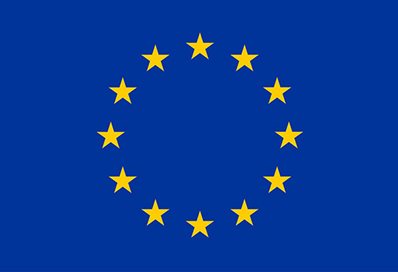The CogLit Project is a two-year research project (2018-2020) based in the School of Humanities, University of Brighton and funded by a Marie Curie Individual Fellowship, European Commission.
The CogLit Project will explore a radically new idea about the nature of literature and art.
It will develop a novel theoretical model of literature and art as a cognitive object and build two-way interactions between literary and art study, linguistics, philosophy and the cognitive sciences.
CogLit will move beyond the existing binary oppositions of artifact-oriented and receiver-oriented approaches to literature and art and focus on literature and art as a case of human agency, offering a radically new view of the interplay between literature, art and mind and an invaluable new treatment of literature and art as a distinct output of human cognition.
The CogLit project will also put the case for two-way interdisciplinarity and an epistemologically robust Arts and Humanities, showing how linguistic and cognitive theories can not only influence but also be influenced by the study of literary and other art forms.
In so doing, CogLit will generate not only a new account of literature and art but also a fresh field of interdisciplinary enquiry, stimulating insights that question current practices and fostering a new, cognitive program for literary and art study in the 21st century.
CogLit will refine and systematize my suggestions about literature and art as a cognitive object by focusing on the following two main research objectives:
To develop an empirically testable discussion of the range of sub-abilities that enable artistic thought states, thereby functioning as their cognitive and neurological infrastructure.
The particular type of creative mental representations involved in artistic thought states is enabled by a whole host of sub-abilities: conceiving of properties of objects, decomposing objects into their components, observing underlying or overarching structures of objects and their relations, entertaining rich, fine-grained and complex informational states of a perceptual, affective or conceptual sort. My aim is to study and draw on current empirical work (e.g. in neuro-cognitive domains and creativity-related research) in order to turn these speculations into empirically tractable suggestions. In terms of the sub-ability to be in fine-grained informational states, for instance, recent neuroscientific research has found that expert dancers show better integration of local proprioceptive signals than non-dancers. Artistic thought states, along with the specialized sub-abilities and creativity patterns involved in them, are of potential interdisciplinary interest to neuroscience, cognitive psychology, philosophy of mind, philosophy of action and creativity-related research. My focus on literature/art as a distinct action-process linked to such specialised sub-abilities emphasises its nature as a characteristic case of human agency, while my view of artistic thought states as instances of spontaneous causation makes my account relevant to philosophical and empirical discussions on ‘intentionality’, ‘rational and defective agency’, ‘action as process’ and ‘action as trying’.
My research will demonstrate the implications of the notion of artistic thought states for existing research in ‘creativity’ in psychology, cognitive science and neuroscience.
To gather tentative evidence about a possible type of worthwhile effects (positive perceptual effects) that makes artistic thought states and their outputs (artworks/ literary texts) relevant to the individual brain.
I will investigate a hypothesis coined in my PhD that artistic thought states and their outputs (artworks/literary texts) give rise to positive perceptual effects. Positive perceptual effects, I will argue, constitute a plausible and neurologically real set of mind/brain-improving sub-attentive effects of literature and art, with wide interdisciplinary consequences.
Sperber and Wilson (S&W) (1995: 153) propose that relevance involves a balancing of mental effort and three types of positive cognitive effects, all of which are conceptual in nature and, as such, involve improvements in knowledge (although they occasionally allude to the possibility that there may be more ways of achieving cognitive effects). Meaning-related effects resulting from the interpretation of literature and art are a conceptual type of effect falling under S&W’s approach. Re-interpreting empirical findings from cognitive neuroscience on visual perception, proprioception and music, I aim to tentatively show that the kind of stimulus that an artwork is also calls for a perceptual type of positive effects not predicted in S&W’s account.
[1] Jola, C., Davis, A & Haggard, P. 2011. Proprioceptive integration and body representation. Experimental Brain Research213 (2-3): 257–265.
[2] Hornsby, J. 2010. Trying to Act, in O’Connor, T. & Sandis, C. (eds.) A Companion to Philosophy of Action. Oxford: Blackwell.
[3] Wilson, D. & Sperber, D. 2002. Truthfulness and relevance. Mind 111: 583-632.



